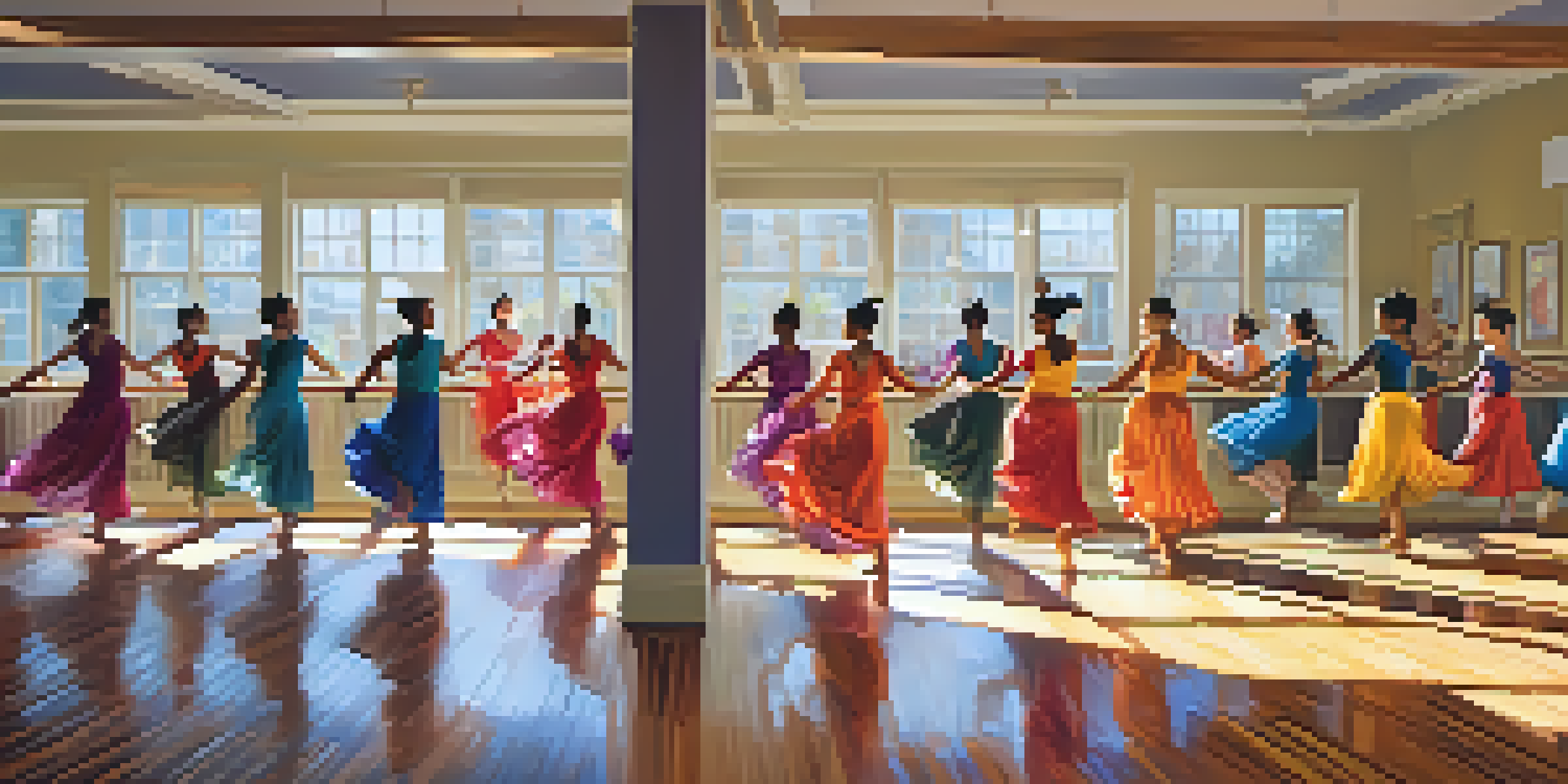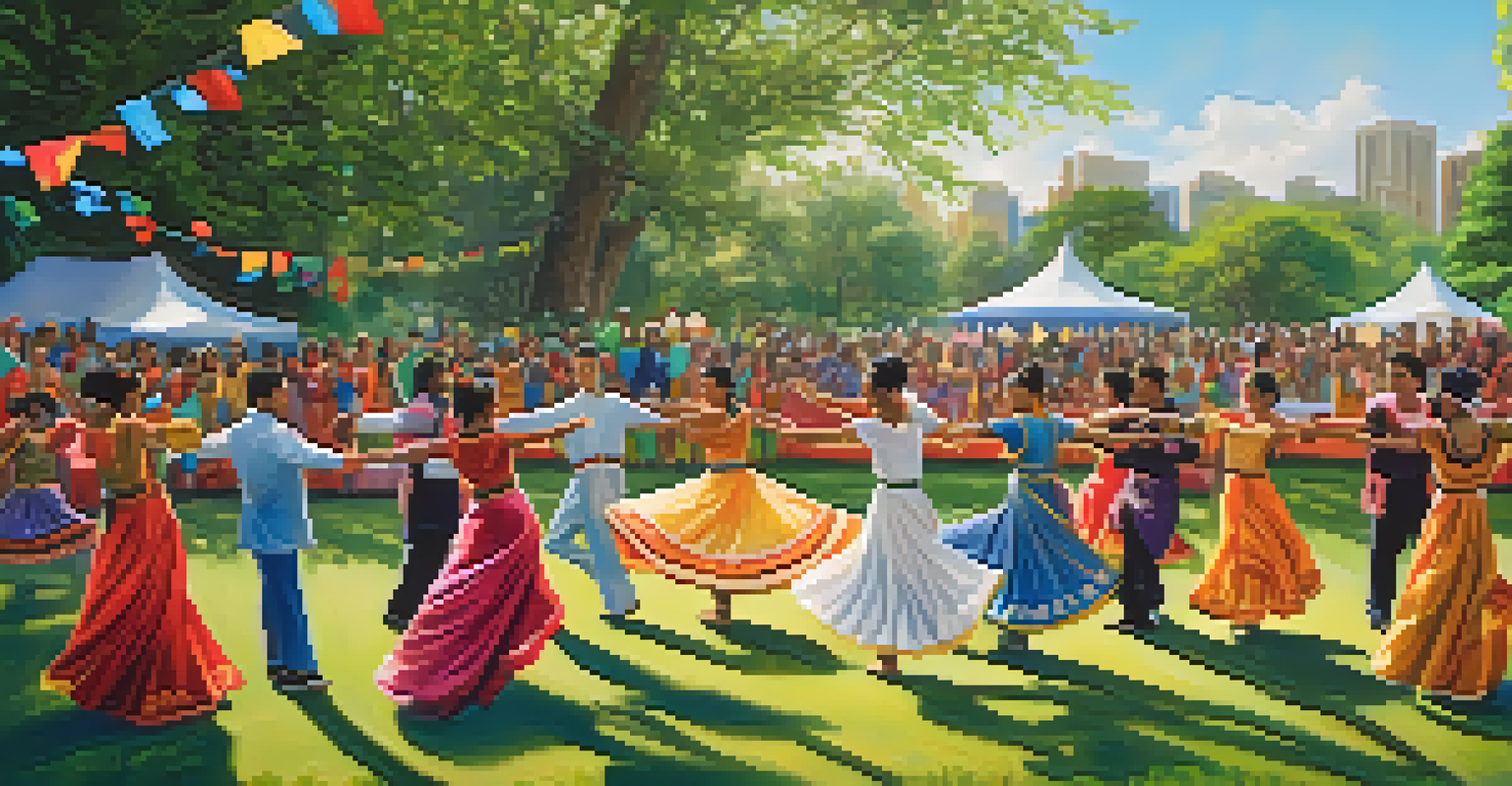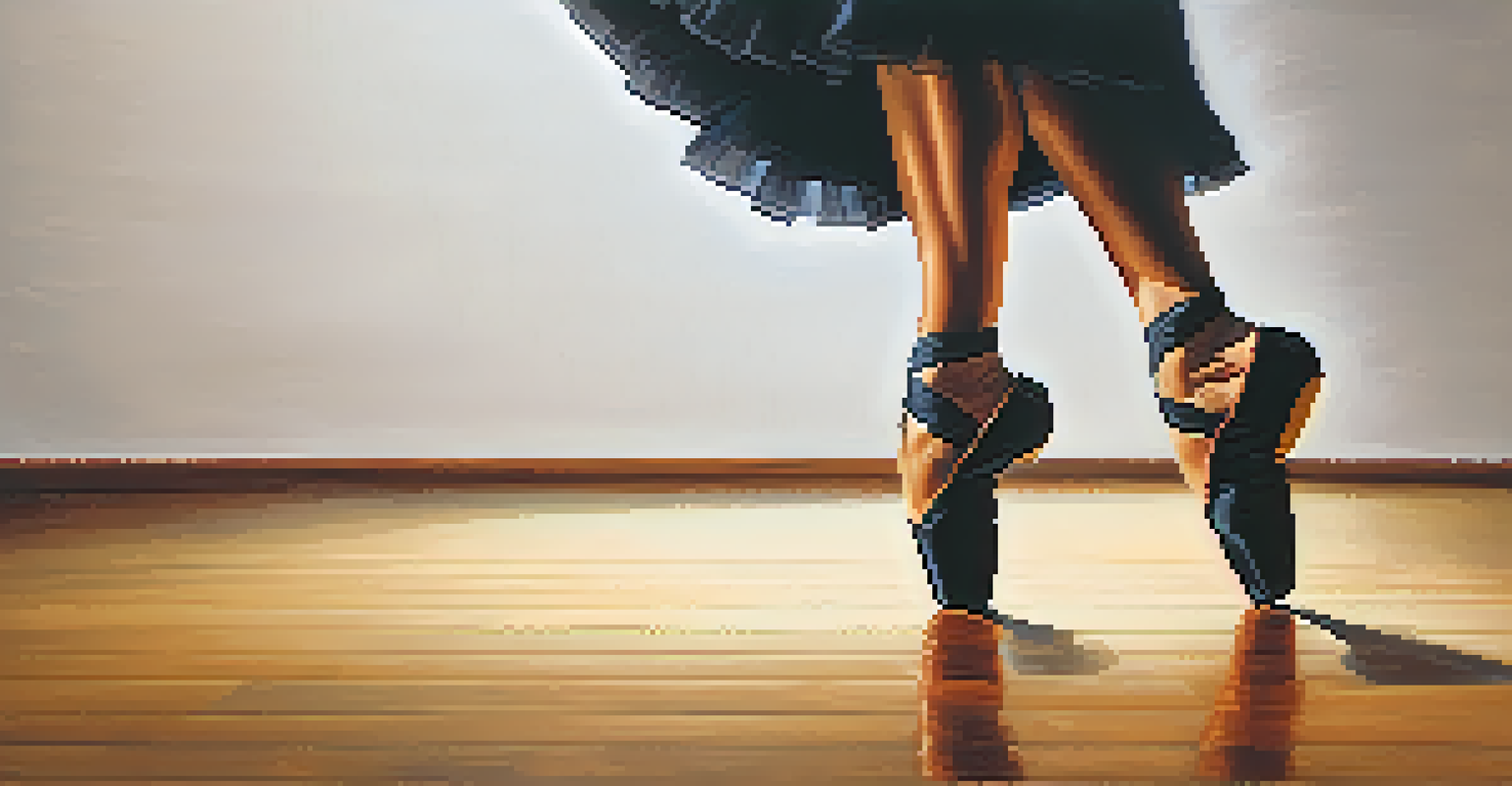Cultural Appropriation: A Dance Community Perspective

Defining Cultural Appropriation in Dance
Cultural appropriation, in the context of dance, refers to the adoption of elements from one culture by members of another, often without permission or understanding. This can include dance styles, costumes, and music that hold significant meaning within their original cultures. It’s essential to recognize that these borrowed elements can sometimes strip away the cultural context and significance, leading to misrepresentation and disrespect.
Cultural appropriation is often a silent thief of identity and a misunderstanding of the richness that each culture brings to the table.
For example, when a dance group incorporates traditional Indigenous movements without acknowledging their cultural origins, it risks trivializing the rich history behind those dances. This not only diminishes the cultural significance but can also perpetuate stereotypes. Therefore, it’s crucial for dance communities to engage in conversations about what appropriation means and how it impacts various cultural groups.
By fostering a deeper understanding of cultural appropriation, dance communities can create a more inclusive environment. This means recognizing the importance of cultural exchange while also respecting and honoring the origins of the practices we incorporate into our work.
The Importance of Cultural Sensitivity
Cultural sensitivity is vital in dance, especially in a globalized world where influences cross borders effortlessly. It encourages dancers and choreographers to seek permission, understand the history, and acknowledge the roots of the styles they wish to incorporate. This sensitivity can lead to richer, more authentic performances that honor the traditions from which they draw.

For instance, many dance styles, such as hip-hop or salsa, have roots in specific cultural communities. Engaging with the creators and communities of these styles ensures that the performances celebrate rather than exploit their origins. This not only enriches the dance experience but also builds bridges between different cultures, fostering mutual respect.
Cultural Appropriation in Dance
Cultural appropriation in dance occurs when elements from one culture are adopted by another without proper understanding or respect, often leading to misrepresentation.
Moreover, cultural sensitivity can help avoid backlash from communities who feel their heritage is being misrepresented. Dancers and choreographers can contribute positively to the narrative and ensure that their art form reflects respect and appreciation rather than appropriation.
Navigating Cultural Exchange vs. Appropriation
Cultural exchange differs significantly from cultural appropriation, and understanding this distinction is crucial for dance communities. While cultural exchange involves sharing and learning from one another, appropriation often occurs without acknowledgment or respect. This can lead to a power imbalance where one culture benefits from another's creativity without giving back.
In a world where cultural exchange is more accessible than ever, it is our responsibility to engage with cultures respectfully and authentically.
Take the fusion of various dance styles as an example; when done collaboratively, it can be a beautiful celebration of diversity. Dancers might explore African dance forms alongside contemporary techniques, creating innovative performances that respect both traditions. Such collaborations often involve conversations and consent, ensuring that all parties feel valued and represented.
By promoting cultural exchange over appropriation, dance communities can cultivate an appreciation for diverse styles while ensuring that they are practiced in a way that honors their origins. This approach not only enriches the dance community but also creates a more respectful and inclusive environment for all dancers.
The Role of Education in Dance Spaces
Education plays a pivotal role in addressing cultural appropriation within dance communities. Workshops, discussions, and training sessions focused on cultural awareness can help dancers understand the histories and significances of the styles they practice. This education fosters an environment where dancers are encouraged to ask questions and seek guidance.
For example, dance studios can invite cultural leaders or experts to teach traditional dance forms, providing a platform for authentic learning. This not only enriches the dancers' skills but also builds a connection with the culture behind the dance. Such initiatives can help prevent appropriation by emphasizing the importance of context and respect.
Importance of Cultural Sensitivity
Cultural sensitivity encourages dancers to seek permission and understand the origins of the styles they incorporate, leading to more authentic and respectful performances.
Furthermore, educating dancers about the impact of their choices can lead to more mindful practices. When dancers understand the implications of cultural appropriation, they are more likely to engage in respectful cultural exchange, ultimately fostering a community built on appreciation rather than exploitation.
Spotlighting Voices from Marginalized Cultures
Highlighting voices from marginalized cultures within dance communities is essential for creating a more inclusive space. By amplifying these voices, we can better understand the cultural significance behind various dance forms and the importance of preserving them. This not only enriches the dance community but also ensures that marginalized voices are recognized and respected.
For instance, featuring dancers from diverse backgrounds in performances and workshops can provide authentic insights into their cultural practices. These dancers can share their stories, teaching others about the significance of their art forms and the potential pitfalls of appropriation. This sharing of knowledge fosters respect and understanding across cultures.
Moreover, creating platforms for these voices encourages collaboration and innovation. When dancers from different backgrounds come together, they can create works that honor their unique heritages while also celebrating their shared passion for dance.
The Impact of Social Media on Cultural Appropriation
Social media has transformed the way dance communities share and consume content, but it has also complicated discussions around cultural appropriation. On platforms like Instagram and TikTok, dance trends can spread rapidly, sometimes without context or acknowledgment of their origins. This can lead to instances of appropriation where dances are performed without understanding their cultural significance.
For example, viral dance challenges often borrow moves from various cultures, but creators may not give credit to the original sources. This can dilute the cultural significance of these movements and perpetuate harmful stereotypes. Dance communities must navigate this landscape carefully, promoting responsible sharing and celebrating the richness of diverse dance forms.
Education Fosters Respectful Practices
Educating dancers about cultural histories and the implications of their choices promotes mindful practices, reducing the risk of appropriation and fostering appreciation.
Encouraging dancers to use their platforms responsibly can foster a greater sense of accountability. When dancers acknowledge the origins of their movements and educate their followers, it helps raise awareness about cultural appropriation and promotes a more respectful dialogue around cultural exchange.
Creating a Respectful and Inclusive Dance Environment
Creating a respectful and inclusive dance environment requires ongoing commitment from everyone in the community. This means actively engaging in conversations about cultural appropriation, educating oneself and others, and being open to feedback. By establishing a culture of respect, dance communities can thrive while honoring the diverse backgrounds that contribute to the art form.
For example, dance studios could implement guidelines to ensure that cultural elements are treated with respect and understanding. This might include creating policies around the teaching of traditional forms and how they are integrated into contemporary practices. Such measures can help foster a sense of accountability among dancers and educators.

Ultimately, a respectful and inclusive dance environment benefits everyone. It encourages creativity and innovation while ensuring that all dancers feel valued and acknowledged for their contributions, paving the way for a more harmonious and diverse dance community.